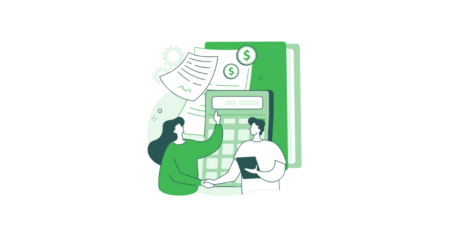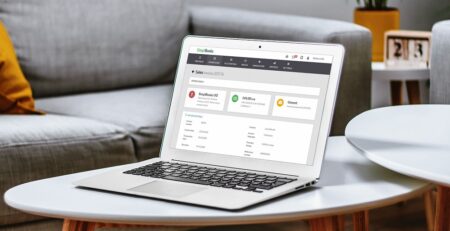Monthly bookkeeping – What is it and how to do it? (0)
What is monthly bookkeeping? Let me first tell you what it isn’t. It’s not rocket science, and it’s not something to be afraid of. Bookkeeping isn’t just a necessary evil, and the tax authorities aren’t out to get you either. Monthly bookkeeping is about recording a company’s income and expenses. It involves calculating the VAT (Value Added Tax) to be paid and deducted, and reporting it to the Tax Administration. It’s interesting and gives business owners a clear picture of where they stand. Doesn’t sound too bad, right?

Accrual or cash based accounting?
Before diving deeper into bookkeeping, it’s good to have the basics clear. The first thing to know is whether the company has chosen accrual or cash based accounting. The accounting method determines when expenses are recorded and reported. In a nutshell: In accrual accounting, expenses and income are recorded for the month in which the work was done or the product delivered. In cash accounting, expenses and income are recorded when the money actually enters or leaves the bank account.
It’s easy and simple, but let’s explain this further with an example:
A company did some work and purchased the necessary materials in January, but received payment from the customer in February.
- In accrual accounting, the costs and income for the work are recorded in January’s books, because both occurred in January.
- In cash accounting, the costs occurred and were paid in January, so they are recorded in January. But the money for the sales only arrived in February, so that belongs in February’s books.
What do you need for monthly bookkeeping?
For monthly bookkeeping, you’ll need a quiet space, a sharp mind, and a pot of coffee. In addition to these, the bank statements and receipts for the month are worth their weight in gold because you can’t do bookkeeping without them. You could technically do your bookkeeping on paper, but a bookkeeping software makes the job much easier (also in terms of archiving). You can check here what kind of automation SimplBooks offers for bookkeeping.
How to do monthly bookkeeping?
In monthly bookkeeping, you record the company’s income and expenses for the month. Whether you record only the bank account transactions, depends on whether the company is using the previously mentioned cash or accrual accounting method. If the company has transactions outside the bank statement, don’t panic. For example, in sole proprietorships, a receipt can be recorded as a personal contribution or withdrawal, without any issues. It’s also common in some fields to keep a cash registry. These would be treated similarly to bank accounts when doing bookkeeping.
It’s a good idea to organize the receipts in the order of the bank statement to make them easier to review later. Once all the receipts have been found and put in order, it’s time to process them. The most important criteria are whether they belong to the company’s operations and what their VAT rate is. The receipts are reviewed one by one, and the entries are made according to the requirements of the accounting law. This is the first step in monthly bookkeeping when you need to know a bit more, for example what kinds of costs can be recorded in the bookkeeping and what should be kept separate, or what is eligible for VAT deductions and what is not.
After recording the receipts, it’s a good idea to check that the accounts in the profit and loss statements and balance sheets look correct. You check if the ending balance of the bank statement matches the balance in the bookkeeping, ensure that the liability accounts on the balance sheet are up to date, reconcile the sales, and generally make sure that none of the accounts show absurd numbers.

What VAT return?
Once all transactions are recorded, and the accounts are reconciled, you’ll figure out whether the company owes VAT to the Tax Administration or if it’s entitled to a refund. Generally, purchases accumulate deductible VAT, while sales generate payable VAT. If there are more deductible amounts (purchases) than payable amounts (sales), the VAT calculation will be negative, meaning the Tax Administration will refund the excess VAT to the business. On the other hand, if sales exceed purchases, the company will owe VAT. If you use a bookkeeping software to do your stuff, they usually calculate VAT for you automatically and you can just check the calculations and send VAT returns easily.
VAT must be paid to the Tax Administration by the 12th day of the second month following the tax period. This means that January’s VAT must be reported and paid by March 12, February’s VAT by April 12, and so on. This gives you about a month and a half to complete the bookkeeping and VAT returns when the month changes. If the VAT deadline falls on a weekend or a public holiday, it automatically moves to the next working day.
The VAT return can also be done through the MyTax service. On the form, you report which month’s VAT is being declared, the payable and deductible VAT amounts, and their difference. SimplBooks bookkeeping software automatically calculates the VAT based on the entries, and you can send the VAT return with the push of a button. Convenient! You can find more information about filing and paying VAT from the official Finnish Tax Administration website.
Once the VAT return is successfully submitted to the Tax Administration, you can take a deep breath and close the bookkeeping binder. You’ve made it. And let’s do this all again next month!





Leave a Reply